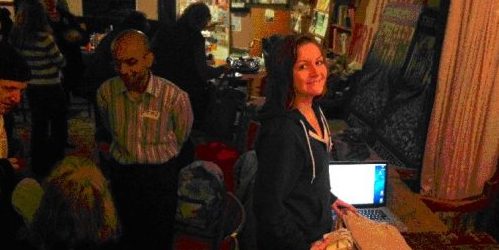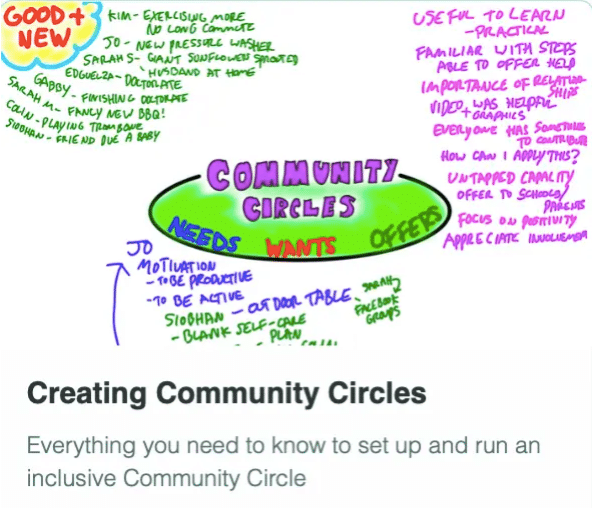
Community Circles
In this course we explore how we have attempted to build inclusive circles of support around individuals and contrast this with a radical approach to hospitality and community building – the Community Circle. The purpose of community circles is to bring people from a local community together to share their skills, talents, gifts and resources. This idea is based upon the premise that ALL of us need three things in our lives to make us happy and fulfilled: these are money, friendship and meaning. We believe that everyone needs community, everyone needs to be heard and everyone needs to have fun.
Community Circles Training Guide Online Course now available via Teachable Platform – Creating Community Circles Learn at your own pace… lots of text and video support |
Category
Inclusion
Peer Support
Parents and Carers
Description
Building Community Circles
In this course we explore how we have attempted to build inclusive circles of support around individuals and contrast this with a radical approach to hospitality and community building – the Community Circle.
The purpose of community circles is to bring people from a local community together to share their skills, talents, gifts and resources. This idea is based upon the premise that ALL of us need three things in our lives to make us happy and fulfilled: these are money, friendship and meaning. We believe that everyone needs community, everyone needs to be heard and everyone needs to have fun.
Community Circles are based upon reciprocity and the assumption that EVERYONE has both gifts and needs – whether these are labelled or not. The circles adopt the fundamental value of inclusion that ‘all means all’, no one is excluded from community circles, instead the circle members work out how to include everyone equally and safely.
A community circle is made up of participants and allies from the local community. The meeting starts with everyone sharing food and conversations. Next the group comes together in a circle so that everyone can see each other and shares what is good and new in their lives, everyone gets a turn to be listened to. ‘New and Good’ breaks the habit of thinking about and acting from what’s wrong, it is an exercise of giving and receiving attention with one another and it also provides a strong foundation of strengths from which we can think about and tackle difficulties. The group is then asked the question what do they want, need or have to offer.
Community circles provide a great foundation or starting point from which to explore connections, build relationships, locate resources and share skills. These circles will be a particularly important resource for Brokers and the people that they work for. They provide a safe forum in which people can meet and friendships can start, a natural reservoir of people and relationships where people can be invited to offer their time and capacity.
To be successful we have to start from a belief in inclusion. A belief that:
1 We are all born ‘in’.
2 All means all.
3 Everyone needs to belong.
4 Everyone is ready.
5 Everyone needs support.
6 Everyone can communicate.
7 Everyone can contribute.
8 Together we’re better.
Learning Objectives
- For participants to learn how to create a Community Circle.
- For participants to understand the underlying rationale and ethos of this way of working.
- To explore ways of maximising an individual’s inclusion and connection with the wider community.
- To explore ways of helping with friendship, social connection and education.
- To increase confidence, social skills and presence of disabled adults and those with a wide range of need in their local community by focusing on their contribution.
Who Is It For?
Anyone interested in mobilising the community to make it more inclusive around disabled or challenging individuals.
Course Content
- Understanding ordinary needs – plus the true dimensions of social inclusion
- Building relationships
- Creating natural circles of support
- Creating a community circle
If you like this you will almost certainly enjoy:
Person Centred Planning using PATH and MAPS
Trackback from your site.
